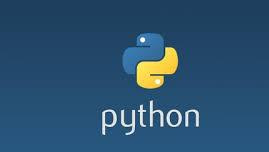object detection using python
Some popular libraries for object detection in Python include:
OpenCV: an open-source computer vision library that provides a number of algorithms for object detection, including Haar cascades, HOG (Histogram of Oriented Gradients), and deep learning-based approaches using convolutional neural networks.
TensorFlow Object Detection API: a powerful object detection framework that uses TensorFlow and offers pre-trained models for object detection, as well as tools for fine-tuning and training your own models.
YOLO (You Only Look Once): a real-time object detection system that uses deep learning-based techniques to detect objects in images and videos.
In order to implement object detection using Python, you’ll need to choose a library or framework that you want to work with, and then follow the appropriate documentation and tutorials to get started. For example, if you choose to use the TensorFlow Object Detection API, you can find detailed instructions and code examples in the official documentation.
import cv2
# Load the image
img = cv2.imread('test2.jpg')
# Initialize the Haar Cascade classifier for face detection
face_cascade = cv2.CascadeClassifier('haarcascade_frontalface_default.xml')
# Detect faces in the image
faces = face_cascade.detectMultiScale(img, scaleFactor=1.1, minNeighbors=5)
# Draw bounding boxes around the detected faces
for (x, y, w, h) in faces:
cv2.rectangle(img, (x, y), (x+w, y+h), (0, 255, 0), 2)
# Show the resulting image
cv2.imshow('Object Detection', img)
cv2.waitKey(0)
cv2.destroyAllWindows()
In this example, we first load an image using OpenCV’s imread() function. We then initialize the Haar Cascade classifier for face detection using CascadeClassifier() and specify the XML file containing the classifier’s parameters.
We then use the detectMultiScale() function to detect faces in the image, with the scaleFactor and minNeighbors parameters controlling the sensitivity and accuracy of the detection. The function returns a list of (x, y, w, h) tuples representing the bounding boxes around the detected faces.
Finally, we use a for loop to draw the bounding boxes around the faces in the original image using the rectangle() function, and display the resulting image using OpenCV’s imshow() function.
Note that this is a very basic example of object detection, and there are many more sophisticated algorithms and techniques that you can use to detect and classify objects in images and videos.
More on machine learning
In Python, there are several popular libraries for machine learning, including scikit-learn, TensorFlow, and PyTorch.
Here are some basic steps you can take to get started with machine learning in Python:
Install the machine learning library of your choice.
Load or generate a dataset. This could be anything from text data to images to numerical data.
Preprocess the dataset. This may involve cleaning the data, normalizing the data, or splitting the data into training and testing sets.
Choose a machine learning algorithm that fits your problem. For example, if you’re doing classification, you might choose a decision tree or a neural network.
Train the algorithm on your dataset.
Evaluate the performance of your algorithm on a test set.
Use your trained algorithm to make predictions on new data.
Hope this helps! Let me know if you have any more questions.
OpenCV and YOLO are two different technologies used for computer vision and object detection.
OpenCV is an open-source computer vision library widely used for image processing and computer vision applications. It has a wide range of functions to perform image and video processing, feature detection, and recognition.
On the other hand, YOLO (You Only Look Once) is a deep learning algorithm used for real-time object detection in images and videos. It uses convolutional neural networks (CNN) to detect objects and classify them into different categories.
Compared to OpenCV, YOLO offers better accuracy in object detection, especially in real-time applications. However, OpenCV is a more versatile solution that can be used for different computer vision tasks in addition to object detection.


